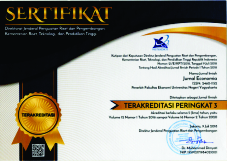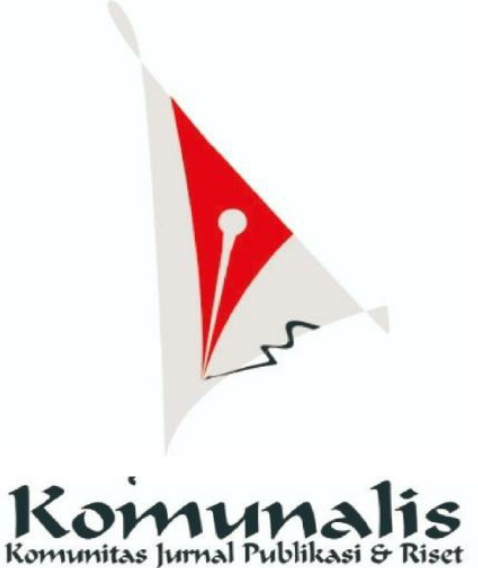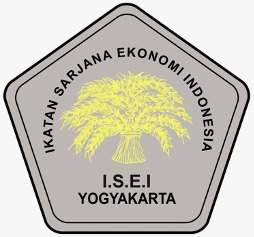Analysis of the Impact of the Raskin Program on Food Security for Poor Households in Indonesia
Downloads
This study aims to determine the impact of assistance from the rice program for people experiencing poverty on food security for poor households. The data in this paper are sourced from the fourth (2007) and fifth (2014) Indonesian Family Life Survey (IFLS). A total of 1346 household samples were used in this study. The sample consisted of 401 treatment groups and 945 control groups. The treatment group is poor households that receive Raskin assistance, and the control group is poor households that do not receive Raskin assistance. The analysis used is Propensity Score Matching (PSM) with Difference in Difference (DiD). The study's results prove that the Rice for the Poor program has no significant impact on the proportion of household food expenditure. The interaction between the variables year (after) and treatment (Raskin) has no significant effect on the proportion of household food. The provision of the Raskin program in a longitudinal period has no impact on household per capita food expenditure.
Downloads
Aisyah, D. N., Nurcahyanto, H., & Santoso, R. S. (2014). Implementasi Program Beras Miskin (Raskin) di Kelurahan Rowosari Kecamatan Tembalang Kota Semarang. Journal of Public Policy and Management Review, 3(1), 1–11. https://ejournal3.undip.ac.id/index.php/jppmr/article/view/4412
Arene, C. J., & Anyaeji, R. C. (2010). Determinants of food security among households in Nsukka Metropolis of Enugu State, Nigeria. Pakistan Journal of Social Sciences, 30(1), 16–19.
Bashir, M. K., Schilizzi, S., & Pandit, R. (2012). The determinants of rural household food security for landless households of the Punjab, Pakistan. (No. 1784-.
Bozsik, N., Cubillos, J. P. T., Stalbek, B., Vasa, L., & Magda, R. (2022). Food security management in developing countries: Influence of economic factors on their food availability and access. PLoS ONE, 17(7 July), 1–24. https://doi.org/10.1371/journal.pone.0271696
Caliendo, M., & Kopeinig, S. (2005). Some Practical Guidence for the Implementation of Propensity Score Matching.
FAO. (1996). World Food Summit.
Getler, P. J., Martinez, S., Premand, P., Rawlings, L. B., & Vermeersch, C. B. J. (2016). Impact Evaluation in Practice: Second Edition. In Proceedings - 2006 IEEE/WIC/ACM International Conference on Web Intelligence and Intelligent Agent Technology (WI-IAT 2006 Workshops Proceedings) (Second Edi). World Bank Group. https://doi.org/10.1109/WI-IATW.2006.145
Gilland, B. (2002). World population and food supply Can food production keep pace with population growth in the next half-century? Food Policy, 27(1), 47–63. https://doi.org/10.1001/jama.1960.63020150005015
Global Food Security Index. (2022). Global Food Security Index 2022. https://impact.economist.com/sustainability/project/food-security-index/explore-countries/indonesia
Iram, U., & Butt, M. S. (2004). Determinants of household food security. International Journal of Social Economics.
Khandker, R. S., Koolwal, G. B., & Samad. (2010). Handbook on Impact Evaluation (Quantitative Methods and Practices). World Bank.
Kominfo. (2018). Program Bantuan Sosial Untuk Rakyat. Kemenkominfo RI. https://www.kominfo.go.id/content/detail/15708/program-bantuan-sosial-untuk-rakyat/0/artikel_gpr
Kuwornu, J., Sulayman, D., & Amegashie, D. (2013). Analysis of food security status of farming households in the forest belt of the Central Region of Ghana. Russian Journal of Agricultural and Socio-Economic Sciences, 13(1).
Lestari, Esta; Sarana, J. (2018). Determinants of household's food and nutrition security in indonesia faktor penentu ketahanan pangan rumah tangga di indonesia. Jurnal EKonomi Dan Pembangunan, 26(2), 105–115.
Najidah, N., & Lestari, H. (2019). Efektivitas Program Keluarga Harapan (Pkh) Di Kelurahan Rowosari Kecamatan Tembalang Kota Semarang. Journal of Public Policy and Management Review, 8(2), 69–87.
Noerkaisar, N. (2021). Efektivitas Penyaluran Bantuan Sosial Pemerintah untuk Mengatasi Dampak Covid-19 di Indonesia. Jurnal Manajemen Perbendaharaan, 2(1), 83–104. https://doi.org/10.33105/jmp.v2i1.363
Prianti, E., Arifin, B., Nugraha Jurusan Agribisnis, A., Pertanian, F., Lampung, U., Soemantri Brojonegoro No, J., & Lampung, B. (2017). PERAN KEBIJAKAN RASKIN TERHADAP POLA PENGELUARAN RUMAH TANGGA PENERIMA RASKIN DI KOTA BANDAR LAMPUNG (The Role of Policy Raskin in Spending Patterns Recepient of Household at Bandar Lampung City). Jiia, 5(4), 352–359.
Romli, O. (2017). Implementasi Program Beras Miskin (Raskin) di Desa Kecamatan Saketi Kabupaten Pandeglang. Jurnal Kapemda, 10(6), 87–97.
Russell, A. (1949). William James Farrer: A biography.
Sasmito, C., & Nawangsari, E. R. (2019). Implementasi Program Keluarga Harapan Dalam Upaya Mengentaskan Kemiskinan Di Kota Batu. JPSI (Journal of Public Sector Innovations), 3(2), 68. https://doi.org/10.26740/jpsi.v3n2.p68-74
Strobl, R. (2017). Does Health Insurance Reduce Child Labour and Education Gaps? Evidence from Rwanda. Journal of Development Studies, 53(9), 1376–1395. https://doi.org/10.1080/00220388.2016.1224854
Sulistyaningrum, E. (2017). the Impact of Earthquake on Child Test Score. Journal of Indonesian Economy and Business, 32(2), 104. https://doi.org/10.22146/jieb.28987
Supandi, S. (2021). Dampak Raskin terhadap Pengeluaran Per Kapita di Kabupaten Ketapang. Jurnal Forum Analisis Statistik (FORMASI), 1(1), 6–16. https://doi.org/10.57059/formasi.v1i1.6
Syahril, & Kurniawan, R. (2019). Variasi Pengaruh Program Beras Miskin ( Raskin ) Terhadap Konsumsi Makanan Rumah Tangga the Heterogeneous Effect of " Rice for the Poor " Pro-. Jurnal Ekonomi Dan Pembangunan, 27(2), 1–10. https://doi.org/10.1016/j.intman.2020.100742
Tegeje, J. (2014). Contribution of Peasant Migration to Household Food Security: A Case Study of Kidea Village of Kigoma Rural District, Tanzania. European Scientific Journal, 2(SPECIAL edition), 49–56.
Tripathi, J. N., Ntui, V. O., Ron, M., Muiruri, S. K., Britt, A., & Tripathi, L. (2019). CRISPR/Cas9 editing of endogenous banana streak virus in the B genome of Musa spp. overcomes a major challenge in banana breeding. Communications Biology, 2(1), 1–11. https://doi.org/10.1038/s42003-019-0288-7
Wagstaff, A., Lindelow, M., Jun, G., Ling, X., & Juncheng, Q. (2009). Extending health insurance to the rural population: An impact evaluation of China's new cooperative medical scheme. Journal of Health Economics, 28(1), 1–19. https://doi.org/10.1016/j.jhealeco.2008.10.007
Warr, P. (2014). Food insecurity and its determinants. Australian Journal of Agricultural and Resource Economics, 58(4), 519–537. https://doi.org/10.1111/1467-8489.12073















